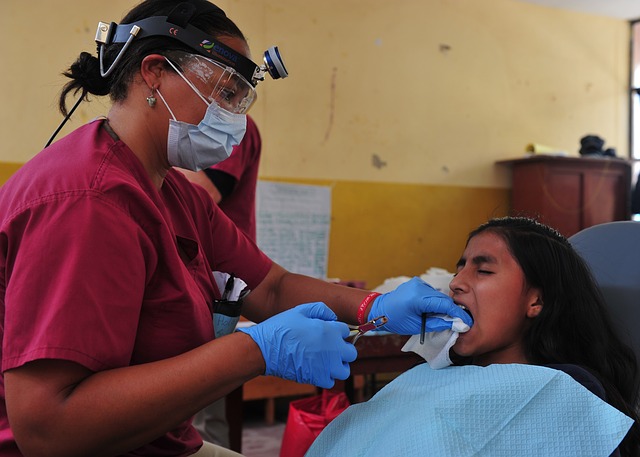Wisdom teeth removal is not without risks and complications such as osteomyelitits can occur. Osteomyelitits is an inflammation and infection of bone cortex and marrow that develops in the jaw. Some symptoms that can occur with osteomyelitits include high body temperature, increased pain, and neck swelling. In some cases emergency treatment is required to prevent death.
In a case in 2012, a 24 year old man woman had an upper left and a lower right wisdom tooth extracted by an oral and maxillofacial surgeon. Five days after surgery the woman returned to the oral surgeon’s office where he discovered
mild swelling near the lower right wisdom tooth site, without pus, and a large amount of food debris. He irrigated the area, placed gel foam packing, and gave the woman a prescription for penicillin. Ten days after surgery the woman returned to the oral surgeon’s office for a second time with pain and swelling on swallowing. She advised the oral surgeon that she had not filled the prescription for penicillin until the ninth day after surgery. Upon examination the oral surgeon found limited mouth opening due to pain, swelling at the right floor of the mouth near the lower right wisdom tooth, and tenderness at the right inferior border of the mandible. He sent the woman to a hospital for a CT scan and for intravenous administration of the antibiotic Clindamycin. Eleven days after surgery the oral surgeon incised and drained the area of the lower right wisdom tooth. Thirteen days after surgery the oral surgeon examined the woman and ordered an additional CT scan to compare to the one taken 10 days after surgery and the woman was discharged from the hospital. Fourteen days after surgery the oral surgeon again examined the woman and noted pharyngeal swelling was 75% improved, facial swelling and erythema were 50% improved, and the sublingual and anterior ramus swelling was 25% improved. Seventeen days after surgery the oral surgeon yet again examined the woman and noted that pain was localized to the right masseter and throat, swelling had improved, and there was still some limited mouth opening. Twenty six days after surgery the oral surgeon yet again saw the woman and performed an incision and drainage of the right masticator space and debridement near where the lower right wisdom tooth was. Twenty eight days after surgery the oral surgeon yet again saw the woman and noted she was not having any difficulty swallowing or difficulty breathing. Thirty three days after surgery the oral surgeon again saw the woman where she said she was feeling better regarding swelling and pain but was experiencing intermittent shooting pain and unable to sense cold and sharp sensations in her inferior alveolar nerve nerve. Forty six days after surgery the oral surgeon saw the woman again and found the hypethesia of the inferior alveolar nerve unchanged and discussed a neurosurgery consultation with the woman. Fifty six days after surgery the woman woke up with increased swelling and pain. Fifty eight days after surgery the woman yet again saw the oral surgeon where he noted increased swelling and tenderness in the mouth and limited mouth opening.
The oral surgeon explained to the patient and her father
“I am concerned because this post-op course has been very atypical for a young, healthy patient after a routine procedure. She is not responding to normal treatment and should have gotten better. I plan to review all films with a head and neck radiologist, to get a second opinion and possibly to consult with an infectious disease specialist.”
The woman then went to a different hospital then the one she had gone to before fifty eight days after the surgical removal of two wisdom teeth. While at the hospital she was diagnosed as having osteomyelitis and underwent a partial resection of her jaw 61 days after the wisdom teeth surgery and then later a fibula bone transplant to reconstruct her jaw 307 days after the wisdom teeth surgery. The women filed a lawsuit against both the original hospital where she was treated and the oral surgeon who performed the wisdom teeth surgery. However, the court dismissed the lawsuit against the original hospital where the woman was treated.

It is therefore important to pay attention to repeated visits that occur back and forth to an oral surgeon’s office after wisdom teeth removal. Unfortunately it may take several weeks or months before a diagnosis of osteomyelitis can be made.
Source:
- Fonseca v. Hershkin, Supreme Court New York County, Case Number: 805025/14, New York Law Journal, vol. 260, no. 123, pp. 28, 2018.
